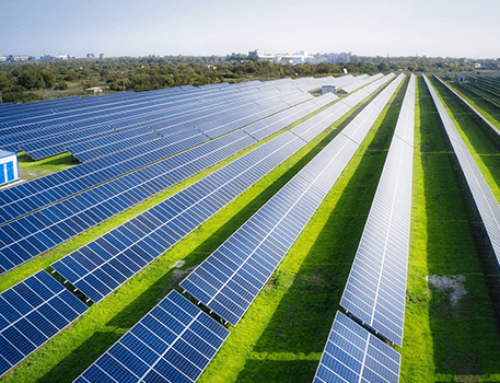
Project developers are concerned about the impact of the GST Council’s plan to raise GST on solar components from 5% to 12%.
According to the GST Council’s recommendations, the GST rate on solar modules was set at 5% in 2018.
However, developers believe that the GST Council’s decision for an increase last week will make solar projects unviable.
With effect from October 1, 2021, the GST council has stated that the GST on “selected renewable energy parts” will be 12 percent rather than the previous 5 percent.
Previously, 70 percent of the contract’s gross value was regarded for the provision of products, fetching a 5% rate – which will now be increased to 12 percent.
This is true in the case of a solar power generation system supply contract. The remaining 30% is for the provision of taxable services, which are subject to an 18% GST rate.
Adding to the challenges of developers
Animesh Damani, the Managing Partner of Artha Energy Resources, commented on the idea to increase the GST, ” The new recommendation by the GST council, increasing the proposed tax to 12% for renewable energy projects, will create a fresh set of challenges for the sector to address. Compared to the earlier 5%, this is a significant increase and will impact both the ongoing and upcoming projects. Utility-scale, open access and OPEX projects will be the most affected.”
He stated that to accommodate the new tax system, the power purchase agreement pricing for these projects would have to be increased. The GST paid for the renewables project would become a cost due to the inverted duty structure, which means there is no GST payable on the sale of power.
Further, Mr. Damani added, “Under the earlier tax structure, the GST component of the project cost was 8.9%, which has now been increased to 13.8%. An overall cost escalation of 4.9% is bound to influence consumer sentiments negatively. There will be prolonged tariff change applications by all developers under the change in law mechanism. DISCOMs, which have been averse to any cost escalation in solar tariffs, might find the new tariffs unattractive. Over one GW of projects across the rooftop and open access segments will be adversely affected.”
Policies not aligned with the targets
The government has set lofty goals for renewable energy installation, pledging to build 175 GW by 2022 and 450 GW by 2030. However, developers have had to wade through a slew of policy reversals. The rooftop solar segment has recently come to a halt due to legislative uncertainties around net metering.
“For a country looking towards net-zero emissions and increased dependency on renewable resources for energy generation, we are taking three steps backward for each step taken forward. This becomes even more pertinent since the government has deemed the renewable energy sector a priority sector,” Damani said.
Multiple court orders and legislation had already compelled the business to restructure unwillingly, resulting in unparalleled uncertainty. “The ripples of dissent from the net metering policy, duty-free period, and other policy flip-flops are already felt throughout the industry. This will only aggravate the situation for businesses and customers alike,” he added.
The rising cost of components and commodities
The recommendation for a comparable increase in GST on iron, manganese, copper, nickel, cobalt, aluminum, lead, zinc, tin, and chromium – ores and concentrates – adds to the developers’ fears. On these items, a GST hike from 5% to 12% has been suggested.
The solar sector has already seen the effects of rising commodity prices, such as steel, aluminum, and copper, over the last six months. The problems for developers have intensified as a result of the proposed GST hike. The solar industry had only recently begun to recover from the second wave of the Covid-19 epidemic.
Pinaki Bhattacharyya, MD & CEO Amp Energy India, said, “With the industry still coming to terms with the effect of the impending basic customs duty imposition from April 2022, the decision to hike the GST in the middle of the year would lead to an increase in the cost of solar and wind power. The solar module/wind turbine generator prices have already gone up, and any additional tax burdens can make some projects unviable or slow them down. We have finally got some momentum going after the second wave of Covid-19, but these untimely announcements will derail the 175 GW program and damage the sector. The government should walk the talk to allow us to get India to meet the 175 GW target by not taxing the sector anymore. We are making clean power in India, and measures like these are against the vision of Atmanirbhar Bharat.”
The tedious process of claims under the ‘change in law’ clause
Under the ‘change in legislation’ clause, the difference in cost due to the increase in GST rates can be claimed. However, for those who are concerned about the lengthy legal process, extensive delays, and costs, this is not the best alternative.
A reliable source, who wished to remain anonymous, gave the information, “A developer can file a review petition as this new GST hike would fall under the ‘change in law’ clause in renewable energy PPAs. But, the whole process is expensive and time-consuming. This recommendation will affect our tariffs and internal rate of return.”
Click Here for more updates Ornatesolar.com



Leave A Comment